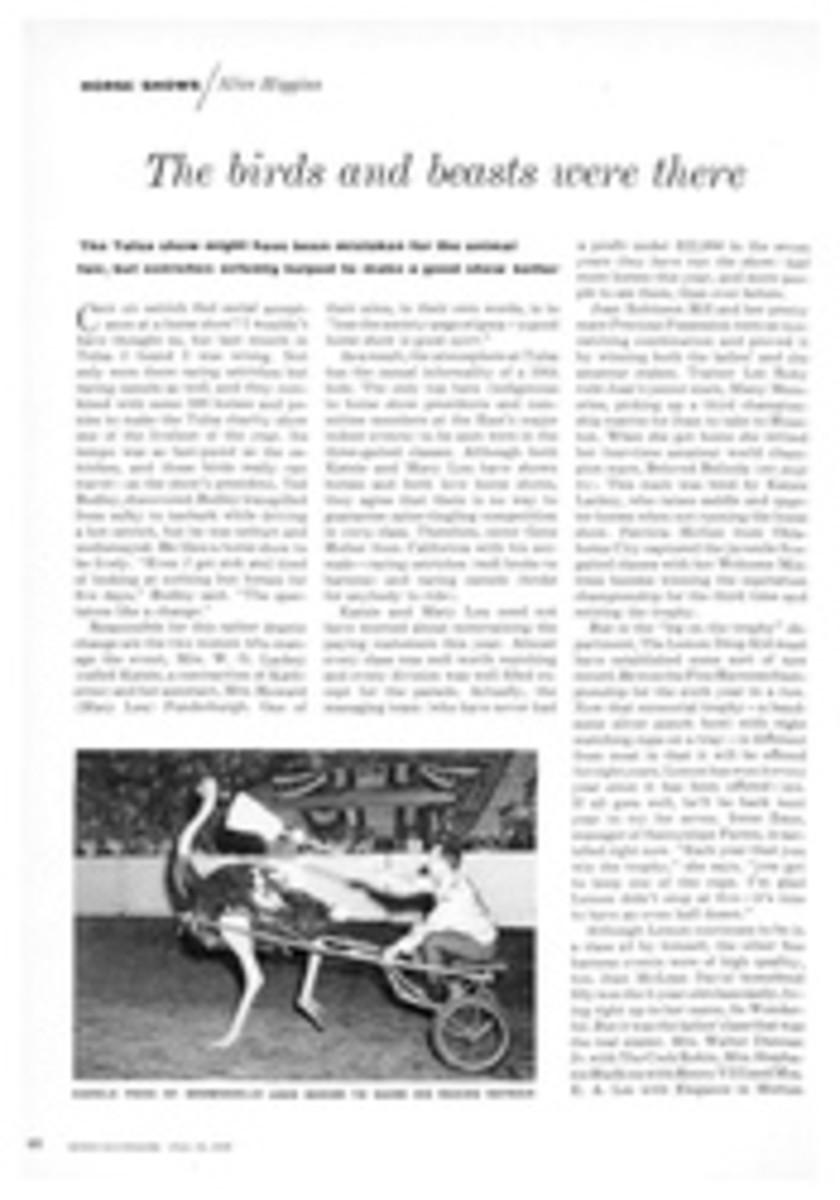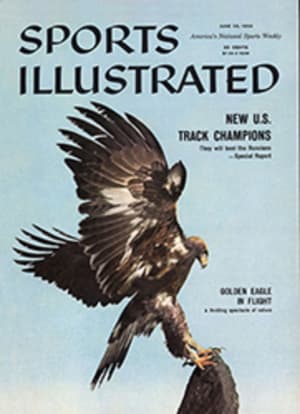
A first first for Aston
The Le Mans 24-hour Grand Prix of Endurance, held this year before nearly 300,000 spectators in hot, oppressive weather, proved once again that despite the engine-size limitations imposed after the 1955 disaster it is still the most exciting as well as the most unpredictable automobile race in the world.
Following the 1955 catastrophe in which 87 spectators were killed and more than 150 injured, the Automobile Club de l'Ouest was threatened with a total ban on the race and kept it going only by spending $600,000 to make the course safer. They built a long concrete wall along the straightaway opposite the pits where the crash had occurred. They put up concrete tiers to prevent crowds from being jammed into small areas. They widened the entire track alongside the pits, creating a new right-hand piste, so that cars could enter the pits in greater safety. Finally, they limited the cubic capacity of the engines to three liters, and also decreed that cars should be equipped with a second seat, a windscreen and wiper, a spare tire and tools. This year they added a rule requiring drivers to change every three hours.
This year's entries contained 11 Ferraris (three of them works cars), an Aston Martin works team and four privately entered Jaguars under the firm's supervision. In the prerace trials the three works Ferraris proved to be the fastest cars on the track. Although the Astons were slower, they hoped to make up in reliability what they lacked in speed.
The Jaguars were dogged with trouble all during the trials. The Lister Jaguars, in particular, suffered under the new fuel rules. With a maximum fuel load at the rear, they almost took to the air at maximum speed and had a dangerous front wheel wobble. In the smaller categories the most promising were the works Porsches and British Lotus Elites.
It was an exciting start. Stirling Moss, driving a works Aston Martin, was first away as the flag dropped, and he led for 17 laps, closely tailed by all three Ferraris, with the Astons and Jaguars lying well behind. Then France's leading driver, Jean Behra, superbly driving a works Ferrari, crept up on Moss and overtook him on the 18th lap. For two hours Moss was sandwiched in second place between Ferrari No. 12 and Ferraris 14 and 15. Then, as was almost inevitable with cars traveling nearly 125 mph, some trouble started. The Behra Ferrari was forced into the pits with headlight trouble. Then Ferrari 15 dropped out with engine malaise. Shortly before midnight Stirling Moss abandoned the race with valve difficulties. Meanwhile, the lead had been taken by works Ferrari No. 14, driven by last year's winners—Belgian Olivier Gendebien and the U.S.'s Phil Hill. Into second place crept the works Aston No. 5 driven by Britain's Roy Salvadori and Texan Carroll Shelby. Lying close behind were another works Aston and two Jaguars.
By 3 a.m. all Jaguars were out with engine trouble. Ferrari 14 was still comfortably in the lead, and works Astons 5 and 6 were in second and third places. Thus they stayed all through the night and morning. By 11 a.m. Sunday, the Ferrari still had a three-lap advantage over the Astons and seemed a likely winner unless it failed to hold up mechanically.
By noon in the world's most grueling race, only 18 cars of the original 53 remained in the running. Still, the casualty rate was small for Le Mans. Works Aston No. 7, with Brian Naylor at the wheel, skidded off the road when it hit an oil slick at dangerous White House Bend. Hours later two more cars left the road at the same point and crashed straight into the wrecked Aston. Britain's Jim Russell, who had been driving a Cooper, went to the hospital with burns and a broken leg.
Bad luck caught up with the leading Ferrari shortly after midday when its power gradually deteriorated into ineffectiveness and it had to retire. From then on it was the Aston Martins' race, and they cruised easily into the first and second positions—the first time an Aston had ever won at Le Mans. The winning Aston No 5, driven by Salvadori and Shelby, had covered 234 laps, or roughly 2,717 miles over the long, nerve-twanging 24 hours.
TWO PHOTOS
THE TEXAN-BRITISH ALLIANCE formed by Carroll Shelby (left) and Britisher Roy Salvadori (right) produced the combination that brought the victory to Aston Martin.

